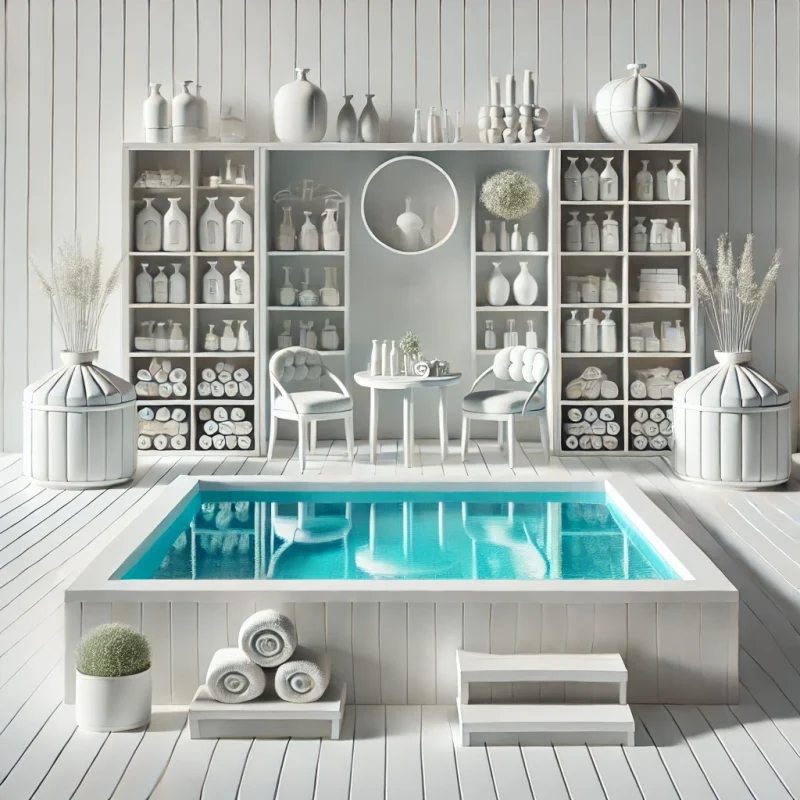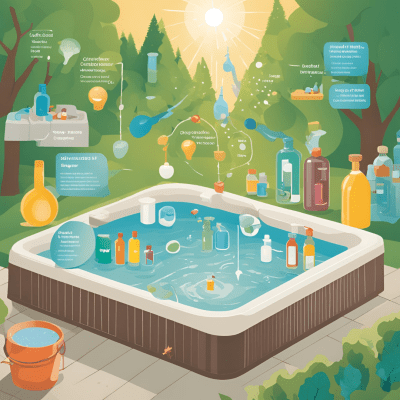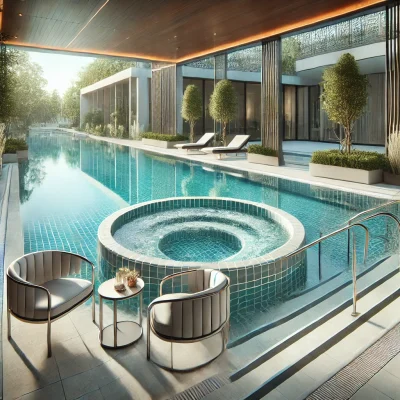Hottub, Swimming Pool
Commercial vs Domestic Spa Pools: Understanding the Key Differences for Safety
Commercial vs Domestic Spa Pools: Understanding the Key Differences for Safety
Spa pools can be found in a variety of settings, and it’s crucial to understand the differences between commercial and domestic systems to ensure proper safety and compliance. The requirements for a spa pool in a busy hotel are very different from those of a hot tub in a private home or a holiday let. This blog post breaks down these key distinctions based on the HSE guidance [38].
Commercial-Type Spa Pools are typically found in public settings such as hotels, leisure centres, health clubs, and beauty salons [39]. These systems are designed to accommodate a large number of bathers and are subject to strict health and safety regulations. They feature more robust design elements to handle the higher usage and associated risks [40]. Key characteristics of these include [40]:
- Deck-Level Overflow: Allows surface water to continuously flow into perimeter channels, which then returns to the balance tank.
- Higher Bather Loads: Designed to accommodate a greater number of users for longer periods, requiring increased levels of monitoring and control [40].
- Separate Filter and Chemical Feeder: Includes a continuous chemical feeder to maintain consistent water treatment, as well as a separate filtration unit to remove contaminants.
- Balance Tank and Plant Room: Typically incorporate a balance tank to manage fluctuations in water levels and a dedicated plant room for housing the filtration and water treatment equipment.
Domestic-Type Spa Pools are typically found in private homes or holiday lets. When used as part of a business activity, they also fall under health and safety legislation [41]. These spa pools generally have a lower bather load and a less complex design [42]. Key characteristics of domestic-type spas include [14, 24]:
- Freeboard and Skimmer System: A system where the water level is below the top of the spa, and surface water is removed through a skimmer [43].
- Lower Bather Loads: Designed for a small, discrete group of users, typically a single family or group [42].
- Inline Disinfectant Feeder: Usually uses an inline disinfectant feeder with bromine or chlorine for water treatment [14].
- Water Replacement: Water should be changed after each group of users or weekly, whichever is sooner [14].
- Rigid or Inflatable Structure: Can be either a rigid or inflatable/foam filled structure [14].
Why do these differences matter?
The type of spa pool has a direct impact on the level of risk and the control measures needed. Commercial systems require more rigorous management due to the increased bather load and potential for higher contamination levels [39]. Domestic systems still require proper maintenance, especially when used as part of a business, but often on a smaller scale [41].
Frequently Asked Questions (FAQs)
Can a domestic hot tub be used for a large party?
It is not recommended to use a domestic hot tub for parties or large gatherings due to the potential for exceeding the design bather load and the increased risk of contamination [44].
Are the regulations for a spa pool in a hotel the same as for a spa in a private home?
No, commercial spa pools in hotels are subject to stricter regulations and require more robust control measures compared to spa pools in private homes or domestic hot tubs that are not used for business purposes [39].
What is a “bather load?”
Bather load refers to the number of people using a spa pool at any given time. It is a key factor in determining the operational requirements for water treatment and maintenance [44, 45].
Why do commercial spas need balance tanks?
Balance tanks manage the water displaced by bathers and provide extra water volume in busy periods, maintaining a constant water level [43, 46].
What type of water treatment is suitable for domestic hot tubs?
Domestic hot tubs typically use inline disinfectant feeders with bromine or chlorine, and the water should be changed weekly or after each group of users [14].
By understanding these distinctions, you can make sure that you are using the correct control measures based on the type of spa pool you have and its intended use.








